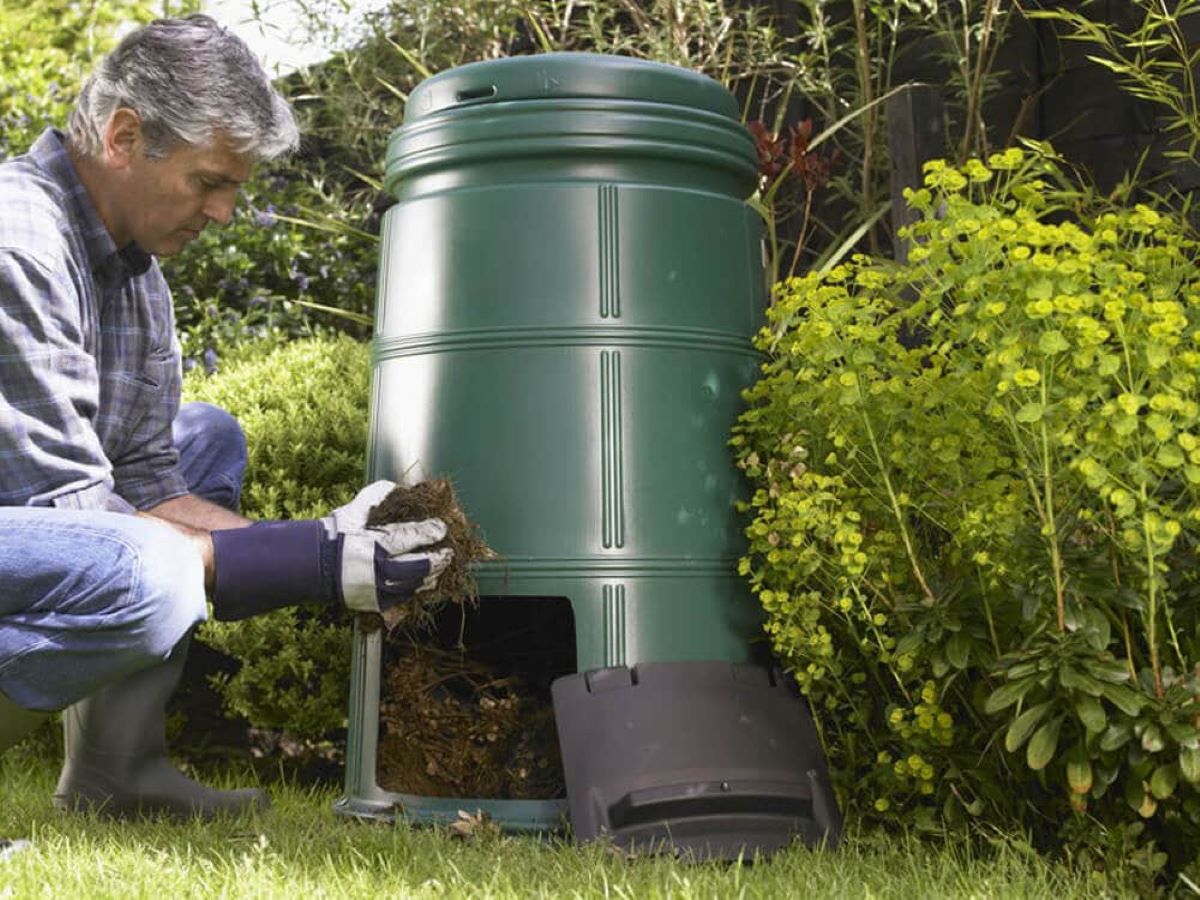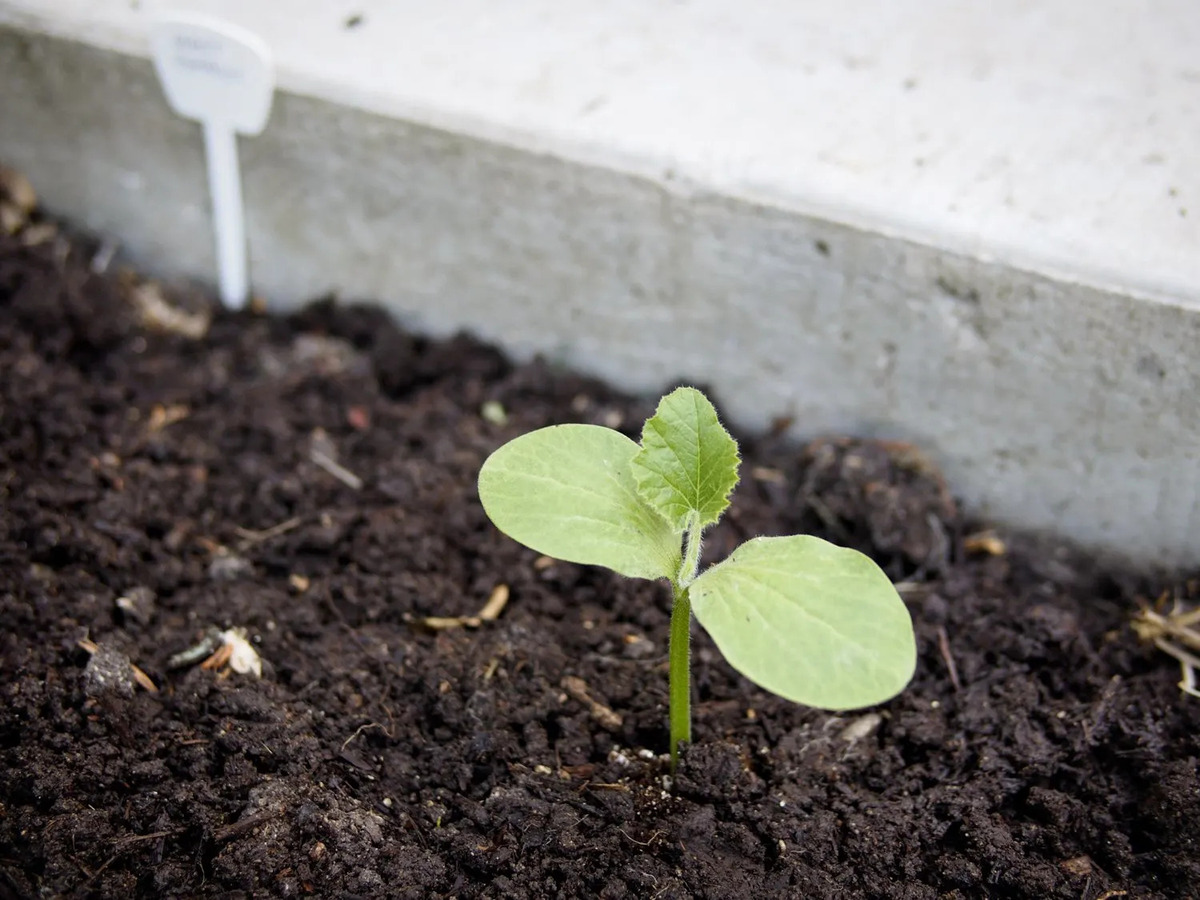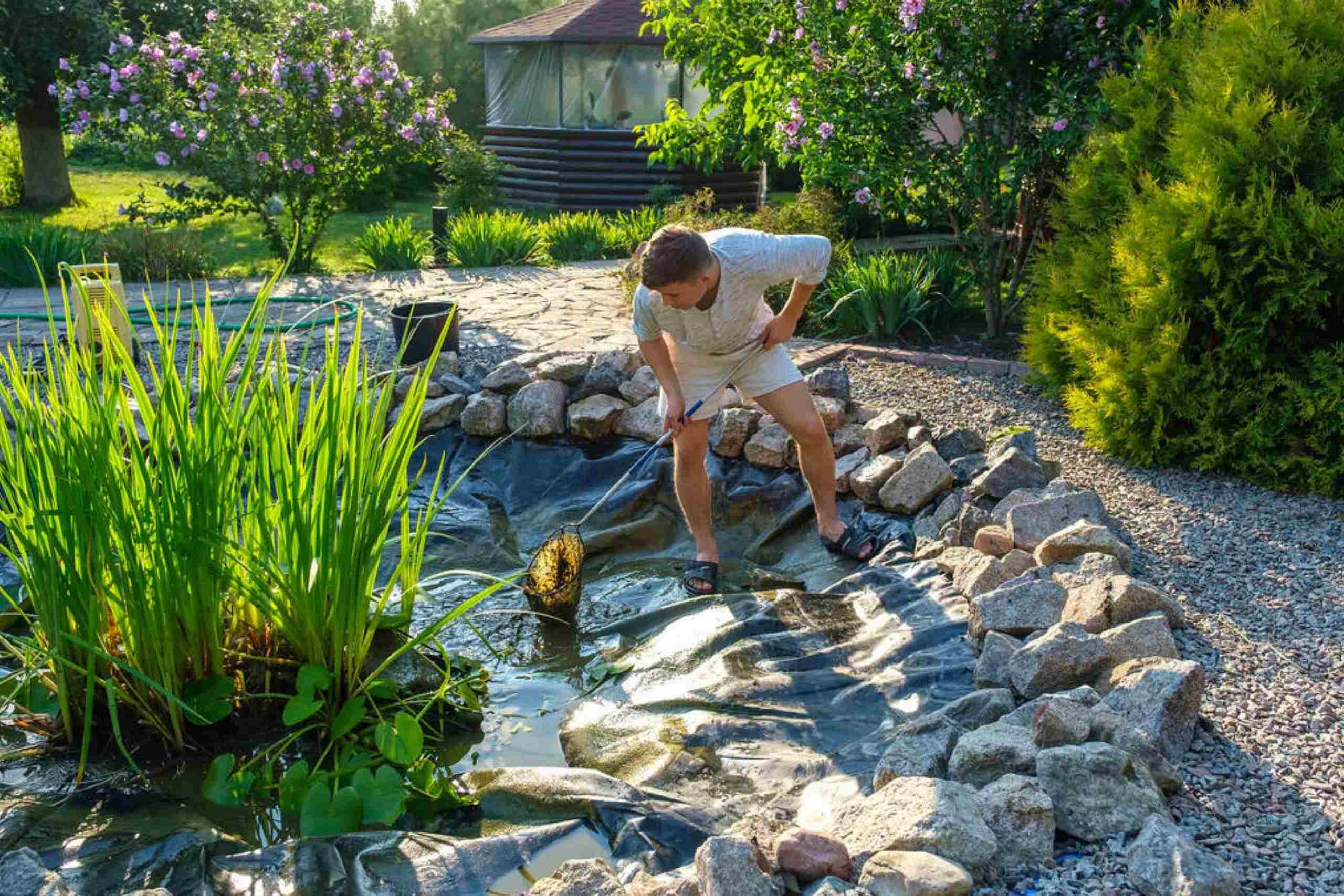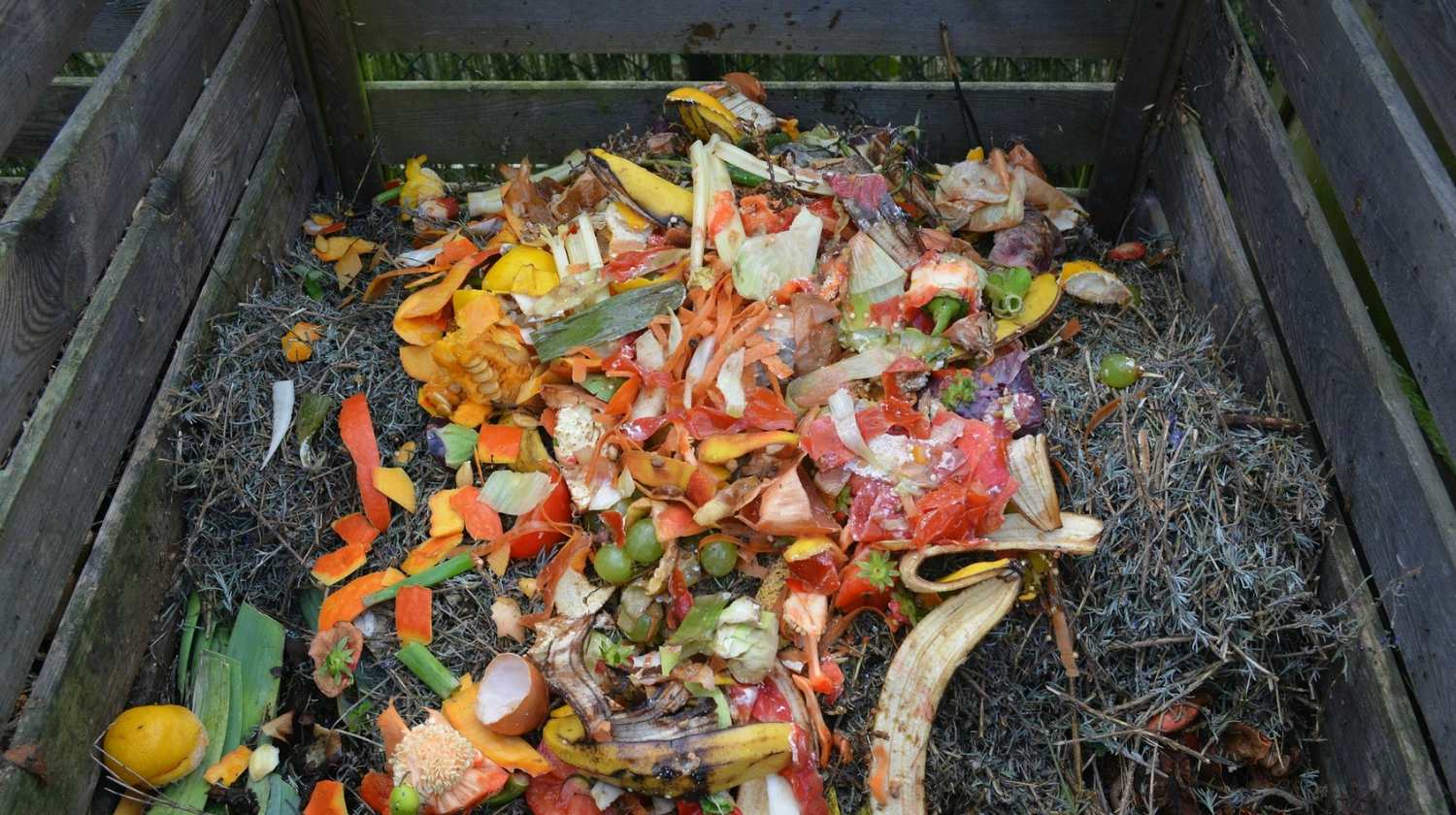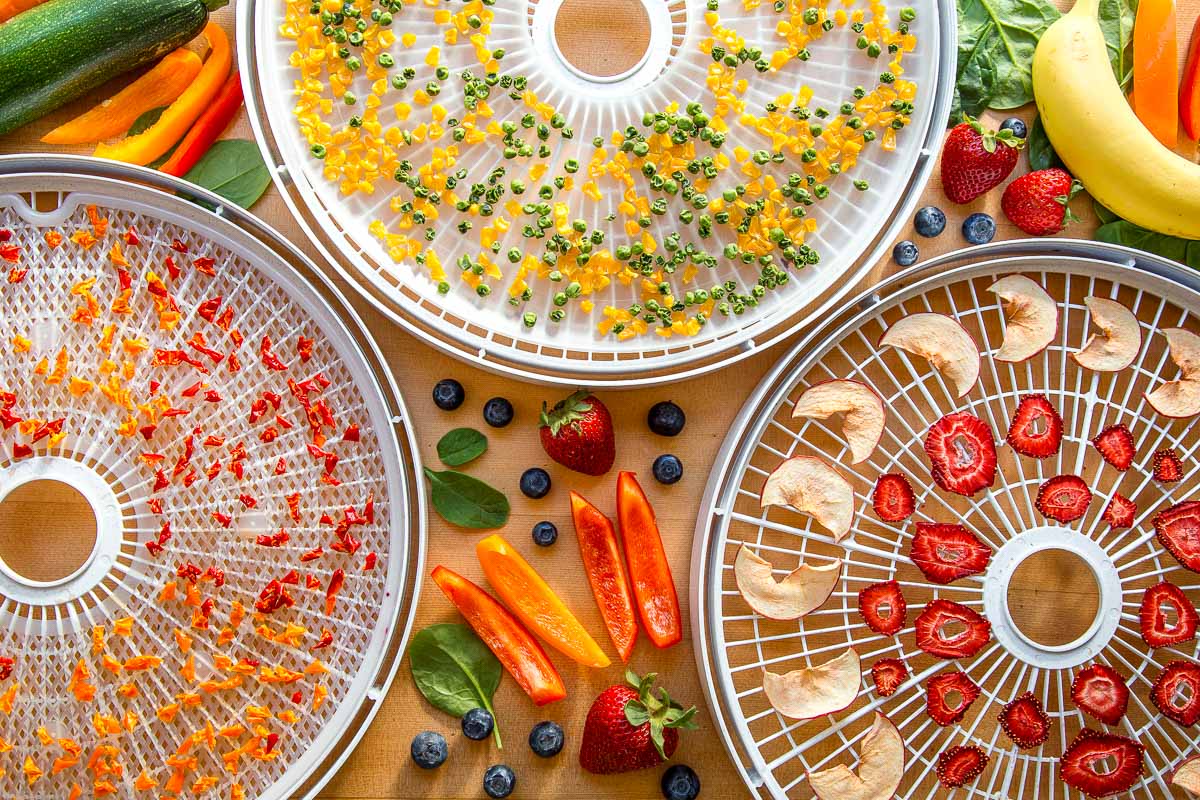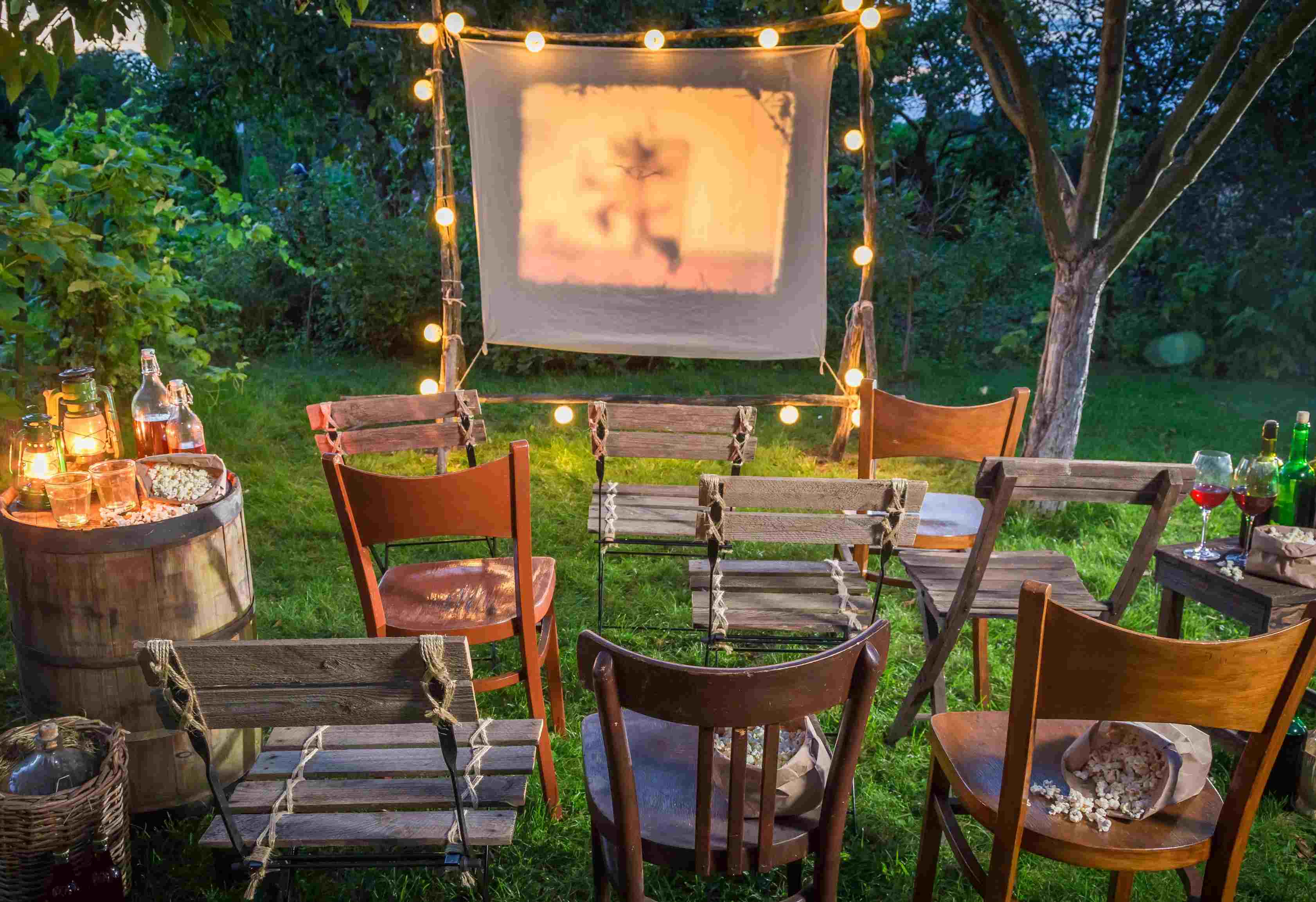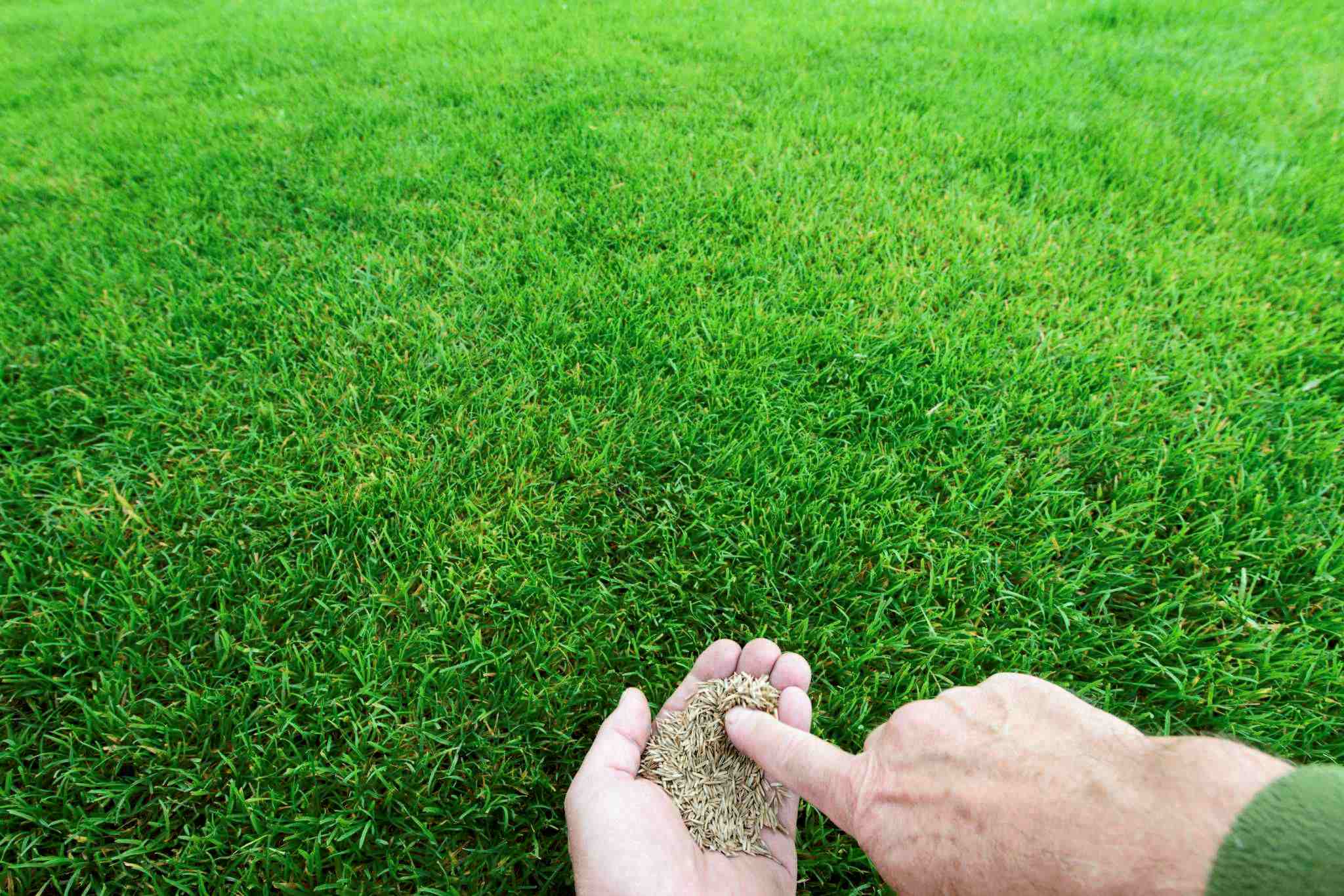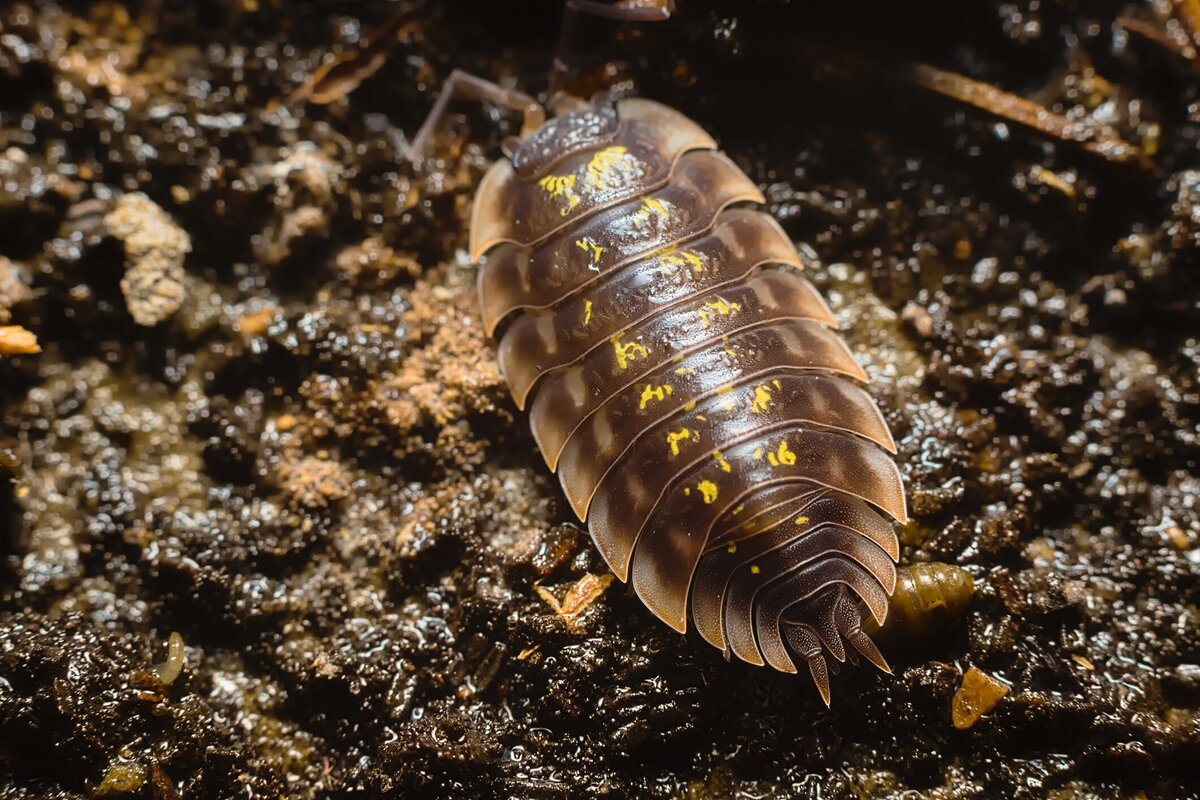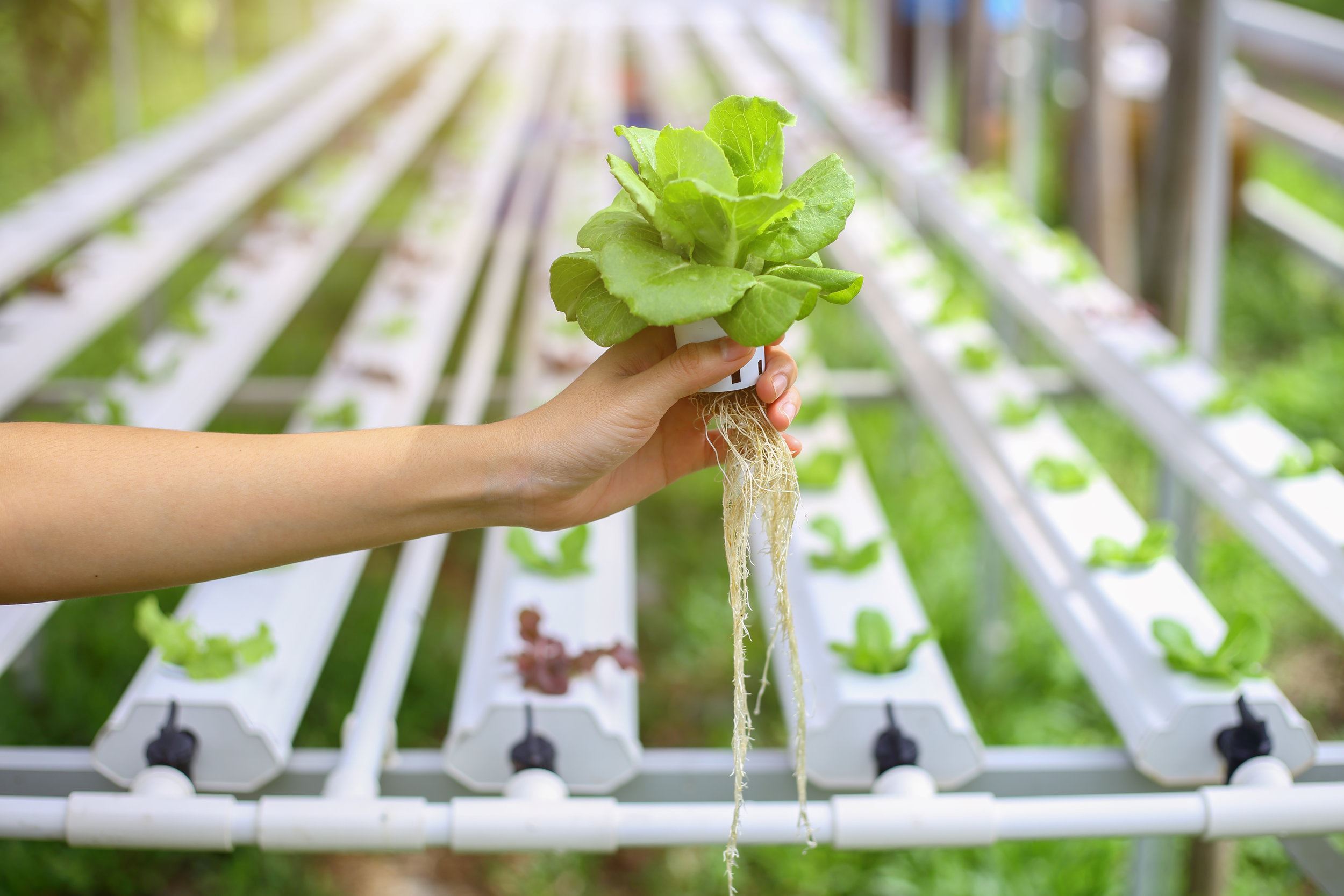Home>Gardening Tips and Tricks>Eco-Friendly Gardening>What Can I Put In My Backyard Instead Of Grass
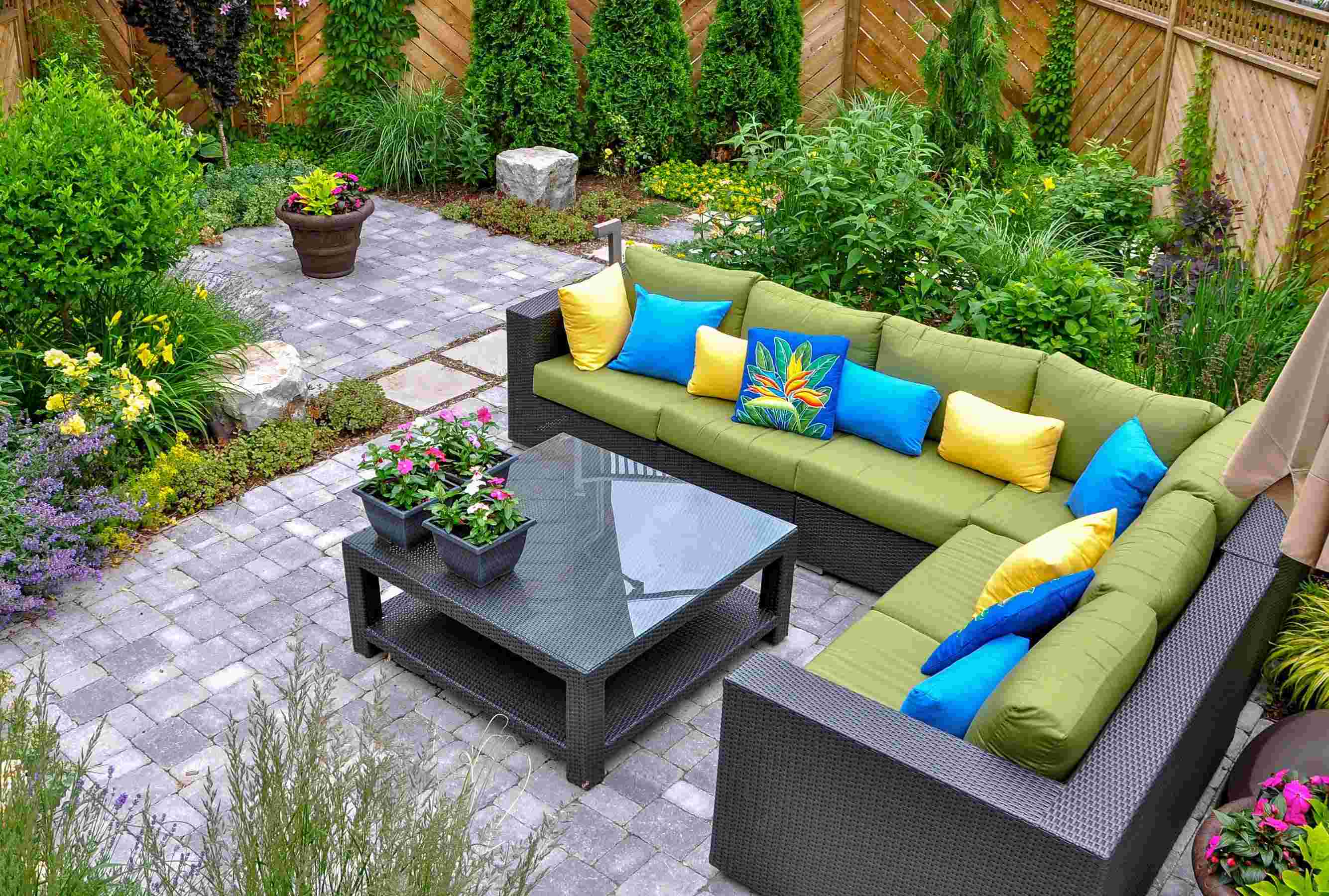

Eco-Friendly Gardening
What Can I Put In My Backyard Instead Of Grass
Modified: January 22, 2024
Discover eco-friendly alternatives to grass for your backyard. Transform your outdoor space with low-maintenance and sustainable gardening options.
(Many of the links in this article redirect to a specific reviewed product. Your purchase of these products through affiliate links helps to generate commission for Chicagolandgardening.com, at no extra cost. Learn more)
Table of Contents
- Introduction
- Benefits of Alternatives to Grass
- Factors to Consider Before Choosing Alternatives
- Patios and Decks
- Pavers and Stepping Stones
- Artificial Turf
- Mulch or Gravel
- Native Plants and Wildflowers
- Vegetable or Herb Gardens
- Water Features
- Outdoor Seating Areas
- Playgrounds or Play Areas
- Fire Pits or Outdoor Fireplaces
- Conclusion
Introduction
Having a lush green lawn in your backyard has long been considered the epitome of a well-maintained garden. However, there is a growing trend towards alternatives to traditional grass lawns that are not only aesthetically pleasing but also more eco-friendly. By exploring these alternatives, you can create a unique and sustainable outdoor space that reflects your personal style.
When considering what to put in your backyard instead of grass, there are several factors to consider. The size of your backyard, its location, and your specific needs and preferences will all play a role in determining the best alternative for you. Additionally, it is important to consider the environmental impact and maintenance requirements of each option.
Not only can alternatives to grass be visually appealing, but they can also offer a range of benefits. By reducing or eliminating the need for regular mowing, watering, and fertilizing, you can conserve water and reduce your carbon footprint. Additionally, many alternatives provide habitats for beneficial insects and wildlife, supporting biodiversity in your backyard.
From patios and decks to vegetable gardens and water features, there is a myriad of alternatives to grass that can transform your backyard into a functional and eco-friendly outdoor haven. In this article, we will explore ten exciting options that can replace or complement traditional grass lawns, allowing you to create a unique and sustainable outdoor space that aligns with your values.
Benefits of Alternatives to Grass
Choosing alternatives to grass for your backyard can offer a host of benefits that go beyond aesthetics. Here are some key advantages to consider:
- Water Conservation: Traditional grass lawns require a significant amount of water to stay green and healthy. By opting for alternatives such as native plants or artificial turf, you can drastically reduce your water usage and contribute to water conservation efforts.
- Reduced Maintenance: Maintaining a grass lawn can be time-consuming and labor-intensive. Alternatives like patios, decks, or gravel require minimal maintenance, allowing you to spend more time enjoying your outdoor space and less time on upkeep.
- Eco-Friendly Practices: Many alternatives to grass promote sustainable gardening practices. Native plants support local ecosystems and provide habitats for wildlife. Vegetable or herb gardens allow you to grow your own food, reducing the need for transportation and packaging.
- Biodiversity: Traditional grass lawns offer limited biodiversity. By incorporating alternatives like wildflowers or native plants, you can attract pollinators like bees and butterflies, supporting a healthy ecosystem in your backyard.
- Enhanced Outdoor Living: Alternatives such as patios, decks, or outdoor seating areas provide functional spaces for entertaining friends and family. They allow for easy furniture placement and create a welcoming atmosphere for relaxation and socializing.
- Year-Round Beauty: Grass lawns can often struggle to maintain their green appearance during dry periods or in colder climates. Choosing alternatives like artificial turf, hardscapes, or evergreen plants ensures that your backyard remains visually appealing throughout the year.
- Allergy-Friendly: Grass can trigger allergies for some individuals. By opting for alternatives like gravel, pavers, or mulch, you can create an allergy-friendly environment that allows outdoor enjoyment without the discomfort.
By considering these benefits, you can make an informed decision and choose an alternative to grass that best suits your lifestyle, preferences, and environmental consciousness.
Factors to Consider Before Choosing Alternatives
Before diving into the world of alternatives to grass, there are important factors to consider to ensure you make the right choice for your backyard. Here are some key factors to keep in mind:
- Climate and Location: The climate and location of your backyard play a crucial role in determining which alternatives will thrive. Consider factors like sunlight exposure, soil type, and local weather patterns when choosing alternatives such as plants or artificial turf.
- Size and Functionality: Assess the size of your backyard and consider how you plan to use it. If you have a small space, options like pavers, decks, or container gardens may be more suitable. For larger areas, you have the flexibility to incorporate a mix of alternatives such as vegetable gardens or water features.
- Maintenance Requirements: Determine the level of maintenance you are willing to undertake. Some alternatives, like patios or decks, require minimal upkeep, while others, like vegetable gardens or native plantings, may need regular care and watering.
- Budget: Consider your budget and the costs associated with each alternative. Installing patios, decks, or water features can be more expensive initially, while options like native plants or gravel may be more budget-friendly. Additionally, factor in long-term maintenance costs, such as watering or replacing materials.
- Environmental Impact: Evaluate the environmental impact of each alternative. Consider water usage, pesticide and fertilizer requirements, and the potential for supporting local ecosystems and wildlife. Opting for alternatives that align with sustainable practices can make a positive impact on the environment.
- Personal Preferences: Ultimately, your personal preferences and style should guide your decision. Consider the overall aesthetics you want to achieve, whether that’s a modern, minimalist look with a patio and container gardens or a natural and vibrant space with native plants and wildflowers.
By carefully considering these factors, you can select the most suitable alternatives to grass that align with your backyard’s unique characteristics and your personal preferences. Taking the time to make an informed decision will result in a backyard space that you can enjoy for years to come.
Patios and Decks
One popular alternative to grass is the installation of patios or decks in your backyard. Patios and decks create a functional and versatile outdoor living space, perfect for entertaining guests or enjoying quiet relaxation. Here are some key points to consider:
- Functionality: Patios and decks offer a solid surface for furniture placement, allowing you to create outdoor seating areas, dining spaces, or even outdoor kitchens. They provide a designated space for various activities, regardless of weather conditions.
- Low Maintenance: Once installed, patios and decks require minimal maintenance compared to grass lawns. Regular sweeping or occasional power washing keeps them clean and looking their best.
- Durability: Properly constructed and maintained patios and decks can withstand wear and tear for many years. They are designed to be resilient, making them a long-lasting alternative to grass.
- Design Options: Patios and decks offer endless design possibilities, allowing you to customize your outdoor space to match your style. From choosing the material, such as concrete, stone, or wood, to selecting colors, patterns, and textures, you can create a unique and visually appealing patio or deck.
- Accessibility: Patios and decks provide a flat and even surface, making them easily accessible for individuals with mobility challenges. They eliminate the need to navigate uneven terrain, ensuring a safe and enjoyable outdoor experience for everyone.
- Enhanced Property Value: Adding a patio or deck to your backyard can significantly increase the value of your property. It creates additional usable space and improves the overall appeal to potential buyers.
When choosing a patio or deck as an alternative to grass, consider factors such as the size of your backyard, your budget, and the desired functionality. Additionally, consult with a professional to ensure proper installation and to obtain permits, if necessary. With a thoughtfully designed and well-constructed patio or deck, you can transform your backyard into an inviting and functional outdoor oasis.
Pavers and Stepping Stones
Pavers and stepping stones offer a visually appealing and practical alternative to grass in your backyard. By incorporating these elements, you can create pathways, define spaces, and add texture and charm to your outdoor area. Here are some key points to consider:
- Functionality: Pavers and stepping stones serve both decorative and practical purposes. They can guide visitors through your backyard, provide access to different areas, or create a focal point in your garden.
- Visual Appeal: Pavers and stepping stones come in various shapes, sizes, and colors, allowing you to create unique patterns and designs to suit your style. They can complement the overall aesthetic of your backyard while adding visual interest.
- Easy Installation: Installing pavers and stepping stones is relatively straightforward, making it a feasible DIY project for those with basic construction skills. However, for more complex designs or larger areas, it is advisable to hire a professional to ensure proper installation.
- Low Maintenance: Once in place, pavers and stepping stones require minimal maintenance. Regular sweeping or occasional washing helps keep them clean, and weeds can be easily managed with proper landscaping fabric or occasional removal.
- Durability: Pavers are known for their longevity and durability. When properly installed, they can withstand heavy foot traffic, extreme weather conditions, and the test of time.
- Accessibility: Pavers and stepping stones create a stable and level surface, making them accessible for individuals with mobility challenges. They provide a smooth walkway that can accommodate wheelchairs, strollers, and other mobility aids.
- Cost-Effective: Pavers and stepping stones are generally a cost-effective alternative to grass, depending on the materials chosen. There is a wide range of options available to fit different budgets and design preferences.
When incorporating pavers and stepping stones into your backyard, consider the layout and flow you want to achieve. Plan the pathway or placement of stones strategically to enhance the overall design and functionality of your outdoor space. Consulting with a professional can help you choose the right materials and ensure proper installation for a beautiful and durable result.
Artificial Turf
Artificial turf, also known as synthetic grass, is a popular alternative to natural grass lawns. It offers a lush and green appearance year-round without the need for watering, mowing, or fertilizing. Here are some key points to consider:
- Low Maintenance: One of the primary advantages of artificial turf is its minimal maintenance requirements. Say goodbye to mowing, watering, and dealing with weeds. Artificial turf only requires occasional brushing or rinsing to keep it clean and maintain its appearance.
- Water Conservation: By opting for artificial turf, you can save a significant amount of water as it does not require regular irrigation. This helps conserve water resources, especially in areas prone to drought or water restrictions.
- Year-Round Appeal: Unlike natural grass, artificial turf remains green and vibrant throughout the year, regardless of weather conditions. It withstands sun exposure, heavy foot traffic, and extreme temperatures without fading or wilting.
- Durability: Artificial turf is designed to be durable and long-lasting, with a lifespan of 10 to 15 years or more. It can withstand heavy use, making it suitable for active families or pet owners.
- Allergy-Friendly: For individuals with grass allergies, artificial turf provides a hypoallergenic alternative. It eliminates the pollen and allergens that may trigger allergic reactions, allowing for a comfortable outdoor experience.
- Safety: Many artificial turf options come with built-in features such as anti-bacterial properties and cushioning for improved safety. This makes it an ideal choice for play areas or backyard sports activities.
- Environmental Impact: While artificial turf offers water conservation benefits, it is important to consider its environmental impact. Artificial turf is made from synthetic materials that require energy-intensive manufacturing processes. However, ongoing advances in technology are making synthetic grass more environmentally friendly.
When considering artificial turf as an alternative to grass, it is essential to choose high-quality products and have it installed by professionals. Proper installation ensures proper drainage and longevity. Additionally, inquire about the product’s warranty and lifespan to make an informed decision that suits your landscaping needs and preferences.
Mulch or Gravel
Mulch or gravel can be an attractive and practical alternative to grass in your backyard. Both options offer low maintenance and can enhance the overall aesthetics of your outdoor space. Here are some key points to consider:
- Low Maintenance: Mulch and gravel require minimal maintenance compared to grass lawns. They do not require mowing, watering, or fertilizing. Additionally, they help suppress weed growth, reducing the need for herbicides.
- Water Conservation: By opting for mulch or gravel, you can conserve water as they do not require regular watering. This is especially beneficial in arid regions or areas with water restrictions.
- Enhanced Plant Health: Mulch acts as a natural insulator, protecting plant roots from extreme temperatures. It also helps retain moisture in the soil and prevents soil erosion. Gravel, on the other hand, can provide excellent drainage for plants that prefer well-drained soil.
- Aesthetics: Both mulch and gravel can add texture and visual interest to your backyard. Mulch comes in a variety of materials and colors, allowing you to enhance the overall aesthetic of your landscaping. Gravel provides a contemporary look and can complement various architectural styles.
- Customization: Mulch and gravel offer flexibility in design and placement. You can create pathways, define garden beds, or even use them to create unique patterns or borders in your backyard. They are versatile materials that can be easily adjusted or rearranged as needed.
- Cost-Effective: Mulch and gravel are generally budget-friendly alternatives to grass. They require less initial investment than hardscape options like patios or decks, making them an attractive choice for those with budget constraints.
When using mulch or gravel in your backyard, consider the specific needs of your plants and the overall design aesthetic you want to achieve. For mulch, choose organic materials like wood chips or bark, which break down over time and contribute to the soil’s nutrient content. With gravel, ensure proper drainage by using a landscape fabric or weed barrier underneath.
Ultimately, mulch and gravel offer practical and visually appealing alternatives to grass, allowing you to create a beautiful, low-maintenance outdoor space.
Native Plants and Wildflowers
Opting for native plants and wildflowers in your backyard is a sustainable and environmentally-friendly alternative to grass lawns. By incorporating these plants, you can create a natural habitat that supports local ecosystems while adding beauty and diversity to your outdoor space. Here are some key points to consider:
- Eco-Friendly: Native plants are well-adapted to the local climate, making them naturally resilient and requiring minimal water, fertilizer, and pesticide inputs. They promote biodiversity by providing food and habitats for native insects, birds, and other wildlife.
- Water Conservation: Native plants are adapted to the local rainfall patterns and soil conditions, reducing the need for supplemental watering once established. This contributes to water conservation efforts and reduces water usage in your backyard.
- Attractive Landscaping: Native plants and wildflowers can create stunning and colorful landscapes. They offer a wide range of shapes, sizes, and bloom times, allowing you to design an aesthetically pleasing backyard that changes seasonally.
- Pollinator Support: Native plants and wildflowers are essential for supporting pollinators such as bees, butterflies, and hummingbirds. They provide nectar and pollen sources, helping to sustain important pollination networks and benefiting the overall health of your local ecosystem.
- Low Maintenance: Once established, native plants require less maintenance compared to traditional grass lawns. They are adapted to local conditions and generally require minimal pruning or fertilizing. Native plants also tend to have natural defenses against pests and diseases.
- Connection to Local Environment: By choosing native plants, you can establish a deeper connection to the local environment. You have the opportunity to learn about the unique plants and wildlife in your area and contribute to the preservation of regional biodiversity.
- Education and Awareness: Landscaping with native plants can serve as an educational tool for yourself, your family, and your community. It can raise awareness about the importance of native plants and the benefits they provide to the environment.
When incorporating native plants and wildflowers in your backyard, research the native species that are well-suited to your specific region and soil conditions. Consider their growth habits, sunlight requirements, and the overall design aesthetic you want to achieve. Mixing different species can provide a diverse and dynamic landscape that supports a variety of wildlife.
By choosing native plants and wildflowers, you can transform your backyard into a vibrant and ecologically beneficial space that brings joy and beauty while playing a role in conserving local biodiversity.
Vegetable or Herb Gardens
Creating a vegetable or herb garden in your backyard is not only a practical alternative to grass but also a rewarding and sustainable way to produce your own food. By dedicating space to grow vegetables and herbs, you can enjoy the benefits of fresh, organic produce while reducing your carbon footprint. Here are some key points to consider:
- Sustainable Food Source: Vegetable and herb gardens allow you to grow your own food, reducing the need for store-bought produce that may have traveled long distances and been treated with pesticides. You have control over the growing methods and can ensure the use of organic practices.
- Health Benefits: Harvesting and consuming freshly grown vegetables and herbs provide maximum nutritional value. You have the opportunity to enjoy a wide variety of flavors and experiment with different culinary herbs to enhance your meals.
- Gardening Experience: Growing a vegetable or herb garden can be a rewarding and educational experience for individuals of all ages. It provides an opportunity to connect with nature, learn about plant life cycles, and develop important gardening skills.
- Cost Savings: Growing your own food can lead to significant savings on grocery bills. Additionally, you have the option to preserve or freeze surplus produce for future use, minimizing waste and ensuring a continuous supply of homegrown goodness.
- Customization: Vegetable and herb gardens offer the flexibility to grow a wide variety of crops that align with your preferences and needs. You can choose to focus on specific vegetables, opt for a mix of annuals and perennials, or create themed gardens, such as a culinary herb garden.
- Environmental Impact: By growing your own food, you reduce the carbon footprint associated with commercial agriculture, including transportation and packaging. Additionally, organic gardening practices help promote soil health and biodiversity in your backyard.
- Community Engagement: Vegetable and herb gardens can provide opportunities for community engagement. You can participate in community gardens or share your harvest with neighbors, fostering connections and promoting a sense of community.
When planning a vegetable or herb garden, consider the sunlight requirements, spacing, and compatibility of different crops. Implement sustainable gardening techniques such as composting, mulching, and using natural pest control methods. Start small and gradually expand your garden as you gain experience and confidence in your abilities.
By creating a vegetable or herb garden, you not only enjoy the benefits of fresh and nutritious food but also contribute to a more sustainable and self-sufficient lifestyle.
Water Features
Adding water features to your backyard can bring a sense of tranquility and beauty while serving as an alternative to grass. Water features such as fountains, ponds, or waterfalls not only create a focal point but also offer several benefits. Here are some key points to consider:
- Soothing Ambiance: The sound of running water can have a calming effect, creating a soothing ambiance in your backyard. Water features provide a peaceful retreat where you can relax, meditate, or simply enjoy the serenity of nature.
- Visual Appeal: Water features add visual interest and create a focal point in your outdoor space. They come in various styles and designs, allowing you to choose one that complements your overall landscaping aesthetic.
- Wildlife Attraction: Water features attract a variety of birds, butterflies, and other wildlife, providing them with a source of water and creating opportunities for observation and enjoyment.
- Improved Air Quality: Moving water helps to humidify the surrounding air, enhancing air quality by reducing dust particles and pollutants. This can be especially beneficial in dry climates or urban areas.
- Cooling Effect: Water features can help to lower the temperature in your backyard by releasing moisture into the air. This can provide relief during hot summer months, making your outdoor space more comfortable.
- Reflective Surface: Some water features, such as ponds or still water surfaces, act as reflective surfaces, adding depth and dimension to your backyard. They can mirror surrounding plants and structures, creating a visually stunning effect.
- Education and Fascination: Water features provide an opportunity for learning and exploration. They can be home to aquatic plants and fish, offering a mini-ecosystem that can be observed and studied.
- Sustainable Practices: Incorporating water-saving measures such as recirculating systems or rainwater harvesting into your water feature can enhance its sustainability. These practices can conserve water while ensuring the longevity and efficiency of your water feature.
When adding a water feature to your backyard, consider the available space, the desired sound and size of the feature, and the maintenance requirements. Ensure proper installation to avoid water leaks and consult with professionals if necessary. With a well-designed water feature, you can transform your backyard into a tranquil oasis that brings a sense of peace and harmony to your outdoor space.
Outdoor Seating Areas
Creating outdoor seating areas in your backyard is a practical and inviting alternative to grass. By incorporating comfortable seating options, you can transform your outdoor space into a cozy and inviting oasis. Here are some key points to consider:
- Entertainment Space: Outdoor seating areas provide a designated space for entertaining guests or spending quality time with family and friends. They offer the opportunity to host barbecues, dinner parties, or simply enjoy a cup of coffee in the fresh air.
- Enhanced Relaxation: Outdoor seating areas create a relaxing environment where you can unwind and recharge. Add comfortable seating, such as lounge chairs or hammocks, along with soft cushions and blankets for cozy relaxation spaces.
- Versatility: Outdoor seating areas can be designed to serve multiple purposes. You can create separate zones for lounging, dining, and gathering, allowing for maximum functionality and versatility in your backyard space.
- Shade and Shelter: Incorporating shade structures such as pergolas, umbrellas, or retractable awnings can provide relief from the sun and create a comfortable seating area even on hot days. Consider adding outdoor curtains or screens for added privacy.
- Customization: Outdoor seating areas offer endless possibilities for customization. You can choose from a wide range of furniture styles, materials, and colors to match your personal taste and create a cohesive design scheme.
- Integration with Nature: When designing your outdoor seating area, consider incorporating elements of nature such as surrounding plants, flowers, or natural materials like wood or stone. This creates a seamless transition from indoor to outdoor and enhances the overall ambiance.
- Lighting and Ambiance: Incorporating outdoor lighting, such as string lights, lanterns, or torches, can create a warm and inviting ambiance in the evening hours. This extends the usability and enjoyment of your outdoor seating area beyond daylight hours.
- Health Benefits: Spending time outdoors has been linked to numerous health benefits, including improved mood, reduced stress levels, and increased vitamin D absorption. Creating a comfortable outdoor seating area encourages you and your family to spend more time outdoors, reaping these benefits.
When designing your outdoor seating area, take into account the available space, the layout of your backyard, and the type of seating that suits your preferences and needs. Incorporate weather-resistant materials to ensure durability and consider adding storage options to keep cushions or extra blankets readily available.
With a carefully designed outdoor seating area, you can transform your backyard into a welcoming retreat that encourages relaxation, socializing, and enjoying the natural beauty of your outdoor space.
Playgrounds or Play Areas
Creating a dedicated playground or play area in your backyard is a fantastic alternative to grass that provides children with a safe and engaging space for outdoor play. Here are some key points to consider:
- Promote Physical Activity: Playgrounds or play areas encourage children to engage in physical activity and exercise. They provide opportunities for running, climbing, swinging, and other activities that contribute to a healthy and active lifestyle.
- Imagination and Creativity: Playgrounds stimulate children’s imagination and creativity. They can create their own adventures, role-play, and engage in interactive play that enhances their cognitive and social development.
- Safe Environment: Designing a play area with safety in mind is essential. Choose age-appropriate equipment, install proper surfacing such as rubber mats or wood chips, and ensure that the play area is free from hazards like sharp edges or tripping hazards.
- Educational Opportunities: Playgrounds offer educational benefits as children learn about balance, coordination, and problem-solving while navigating the play equipment. Incorporating elements like sensory walls or interactive panels can further enhance learning opportunities.
- Social Interaction: Playgrounds provide a space for children to interact, play together, and develop social skills. They learn about sharing, taking turns, and collaborating with others, fostering friendships and social connections.
- Adaptability: Playgrounds can be designed to grow with your children. Choose modular equipment that can be added to or adjusted as your children’s interests and abilities change over time.
- Nature Integration: Incorporate natural elements into your play area, such as climbing structures made of logs or rocks, to provide a connection to nature and enhance the sensory experience for children.
- Supervised Play: Having a designated play area in your backyard allows for easier supervision of children’s play. You can keep an eye on their activities and ensure their safety while allowing them the freedom to explore and have fun.
When designing a playground or play area, consider the age of your children, available space, and budget. Choose equipment that meets safety standards and is appropriate for your children’s age and developmental stage. Also, ensure the play area is easily visible from the house for monitoring purposes.
By creating a well-designed and safe play area in your backyard, you provide children with the opportunity to engage in active play, foster their creativity, and enjoy the benefits of outdoor exploration and social interaction.
Fire Pits or Outdoor Fireplaces
Fire pits or outdoor fireplaces are a popular alternative to grass that can provide warmth, ambiance, and a gathering space in your backyard. Whether you’re hosting a cozy evening with family or entertaining friends, these features can create a captivating atmosphere. Here are some key points to consider:
- Comfort and Warmth: Fire pits or outdoor fireplaces offer a source of warmth, allowing you to extend the use of your outdoor space during cooler evenings or in colder seasons. Gathering around a fire can create a cozy and inviting atmosphere for relaxation and conversation.
- Socialization and Entertainment: These features provide a focal point for socializing and entertaining. Friends and family can gather around the fire, share stories, roast marshmallows, or even have a DIY outdoor barbecue experience.
- Aesthetics: Fire pits and outdoor fireplaces add visual appeal to your backyard, creating a sense of charm and elegance. They can be designed to match your overall landscaping theme and can serve as a centerpiece or accent feature in your outdoor space.
- Customization: Fire pits and outdoor fireplaces offer flexibility in design, size, and fuel type. There are various options available, such as wood-burning, gas-powered, or even eco-friendly ethanol options, allowing you to choose the one that best suits your preferences and needs.
- Outdoor Cooking: Some fire pits or outdoor fireplaces come with grilling attachments or built-in pizza ovens, providing an opportunity for outdoor cooking and creating a unique culinary experience in your backyard.
- Year-Round Enjoyment: With the addition of fire pits or outdoor fireplaces, you can extend your outdoor enjoyment throughout the year. Whether it’s a summer gathering or a cozy winter evening, these features provide versatility for year-round usage.
- Safety Considerations: Safety is of utmost importance when incorporating fire features in your backyard. Ensure proper installation and follow local safety regulations. Keep a fire extinguisher nearby and establish clear guidelines for fire management and supervision.
- Environmental Impact: Consider the environmental impact of your fire feature. Opt for clean-burning fuel options or sustainable materials. Additionally, be mindful of local air quality regulations and restrictions.
When incorporating a fire pit or outdoor fireplace, consider the available space, proximity to surrounding structures, and your local climate. Consult with a professional to ensure proper installation and adherence to safety guidelines.
By adding a fire pit or outdoor fireplace, you can create a warm and inviting atmosphere in your backyard, allowing for moments of relaxation, connection, and enjoyment throughout the year.
Conclusion
Exploring alternatives to traditional grass lawns can open up a world of possibilities for creating a unique and eco-friendly backyard space. From patios and decks to native plants and water features, there are countless options to consider that offer both aesthetic appeal and environmental benefits.
By choosing alternatives to grass, you can reduce water consumption, minimize maintenance requirements, support local ecosystems, and enhance the overall functionality and beauty of your outdoor space. Whether you opt for a low-maintenance patio where you can relax and entertain, a sustainable vegetable garden that provides fresh produce, or a serene water feature that adds tranquility, each alternative offers its own set of advantages that can align with your lifestyle and values.
Before making a decision, consider factors such as climate, size, functionality, maintenance requirements, and budget. By carefully assessing your needs and preferences, you can choose the alternative that best suits your backyard and maximizes its potential.
Remember to consult with professionals when necessary, especially for installations such as decks, water features, or fire pits, to ensure proper construction, safety, and adherence to local regulations.
By embracing the alternatives to grass, you can create a sustainable and enjoyable backyard space that reflects your personal style while minimizing environmental impact. Whether you prioritize water conservation, native plantings, or outdoor entertaining, the possibilities are endless. So go ahead and transform your backyard into a haven that not only enhances your outdoor living but also contributes to a greener and more eco-friendly lifestyle.
